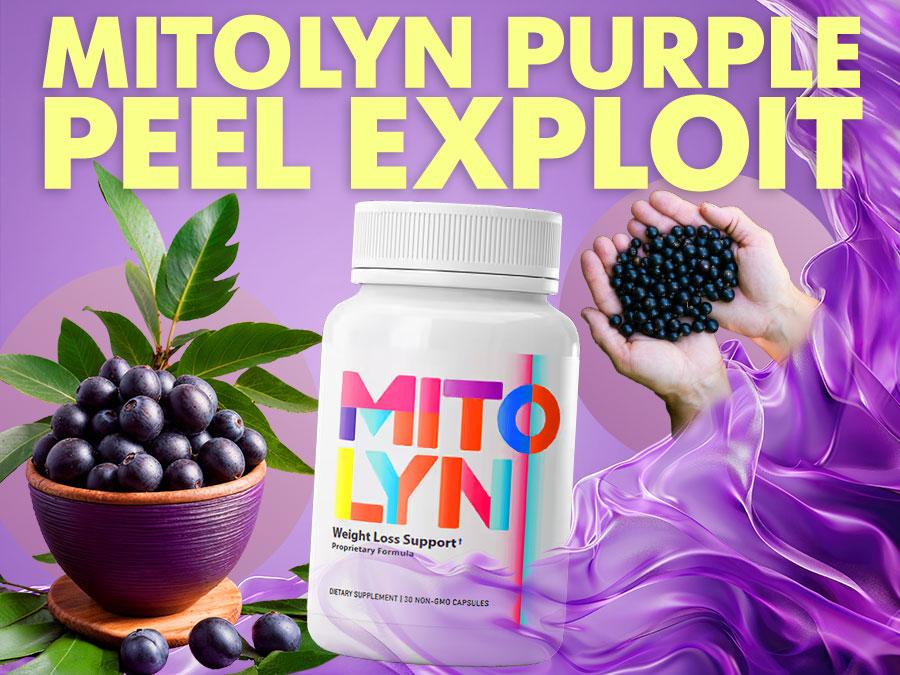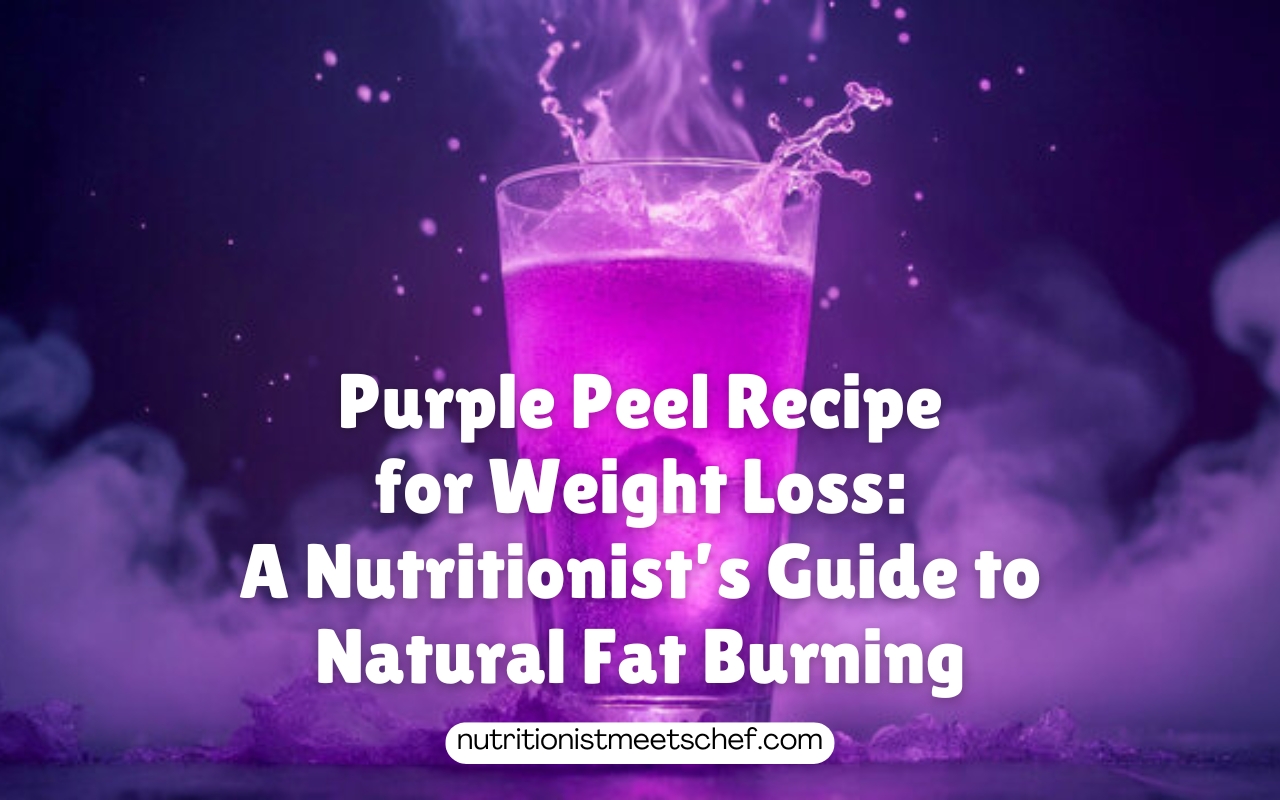What Is The Purple Peel Diet

In a world saturated with fleeting diet trends promising rapid weight loss and miraculous health benefits, the "Purple Peel Diet" has recently emerged, capturing the attention of health enthusiasts and skeptics alike. But beneath the vibrant name lies a complex set of dietary principles and claims that warrant careful examination, moving beyond mere hype.
This article aims to dissect the Purple Peel Diet, analyzing its purported benefits, underlying science (or lack thereof), potential risks, and expert opinions. By exploring the evidence and dissecting the claims, we seek to provide readers with a balanced understanding of this increasingly popular dietary approach, allowing them to make informed decisions about their health and well-being.
What Exactly Is the Purple Peel Diet?
The Purple Peel Diet centers around consuming foods that are naturally purple or blue in color, like blueberries, eggplant, purple potatoes, and red cabbage. The core principle hinges on the high concentration of anthocyanins found in these foods.
Anthocyanins are powerful antioxidants believed to offer various health advantages, from reducing inflammation to potentially preventing certain diseases. Proponents of the diet suggest that increased anthocyanin intake leads to weight loss, improved heart health, and enhanced cognitive function.
Unlike many restrictive diets, the Purple Peel Diet doesn't strictly limit calorie intake. Instead, it encourages individuals to replace processed foods and less nutritious options with purple-hued alternatives, implicitly promoting a healthier overall eating pattern.
The Purported Benefits and the Science Behind Them
The primary appeal of the Purple Peel Diet lies in the antioxidant properties of anthocyanins. These compounds are known to combat free radicals, unstable molecules that can damage cells and contribute to aging and disease.
Studies have linked anthocyanin consumption to several potential health benefits. These include reduced risk of cardiovascular disease, improved blood sugar control, and enhanced memory and cognitive function in some populations.
However, it's crucial to note that most of these studies are observational or conducted in vitro (in a laboratory setting). Human trials are often small and yield inconsistent results, making it difficult to definitively attribute these benefits solely to anthocyanins or the Purple Peel Diet itself.
Weight Loss Claims: Examining the Evidence
While the Purple Peel Diet doesn't explicitly advertise itself as a weight-loss program, many individuals are drawn to it for this purpose. The diet's emphasis on whole, unprocessed foods inherently promotes a lower-calorie, nutrient-dense eating pattern.
Replacing sugary snacks and refined carbohydrates with fruits and vegetables naturally reduces calorie intake, which can contribute to weight loss. The high fiber content of many purple foods also promotes satiety, potentially leading to reduced food consumption.
However, there's no scientific evidence directly linking the Purple Peel Diet to weight loss. Any weight loss experienced on this diet is likely due to the overall improvement in dietary quality and reduced calorie intake, rather than any unique property of purple foods.
Potential Risks and Considerations
The Purple Peel Diet, in its basic form, is generally considered safe for most individuals. It encourages the consumption of fruits and vegetables, which are essential components of a healthy diet.
However, potential risks and considerations exist. Overconsumption of certain purple foods, such as prunes, can lead to digestive discomfort, including bloating and diarrhea.
Furthermore, relying solely on a single color group of foods may result in nutrient deficiencies. A balanced diet includes a variety of foods from all color groups to ensure optimal intake of essential vitamins and minerals.
Expert Opinions and Concerns
Registered dietitians and nutritionists generally agree that incorporating more fruits and vegetables into one's diet is beneficial. However, they caution against viewing the Purple Peel Diet as a magic bullet for weight loss or health.
“While anthocyanins are undoubtedly beneficial, focusing solely on purple foods is an overly simplistic approach to health and nutrition," says Dr. Emily Carter, a registered dietitian. "A balanced diet that includes a variety of colorful fruits and vegetables is essential for optimal health."
Experts also express concern about the potential for restrictive eating patterns. Although the diet doesn't explicitly restrict other food groups, individuals may feel pressured to exclusively consume purple foods, potentially leading to nutrient imbalances.
The Future of the Purple Peel Diet: Fad or Sustainable Lifestyle?
The Purple Peel Diet's long-term sustainability remains questionable. While incorporating more purple fruits and vegetables into one's diet is undoubtedly a healthy practice, adhering to a strictly purple-focused eating pattern may be challenging and unnecessary.
The diet's success ultimately depends on individual preferences and adherence. Individuals who enjoy purple foods and find the diet easy to follow may experience long-term benefits. However, those who struggle to incorporate these foods into their diet may find the diet unsustainable.
Moving forward, it's crucial to focus on the broader principles of healthy eating, rather than fixating on a single color group of foods. A balanced diet, regular exercise, and a healthy lifestyle are the cornerstones of long-term health and well-being, regardless of the color of one's plate.


![What Is The Purple Peel Diet Purple Peel Extract [STEP BY STEP] 6 Second Purple Peel Exploit](https://i.ytimg.com/vi/4tZ_4dT-XGc/maxresdefault.jpg)




![What Is The Purple Peel Diet PURPLE PEEL EXPLOIT ⚠️ [FULL RECIPE & INGREDIENTS] WHAT'S THE PURPLE](https://i.ytimg.com/vi/9oSASPBfGlg/maxresdefault.jpg)










